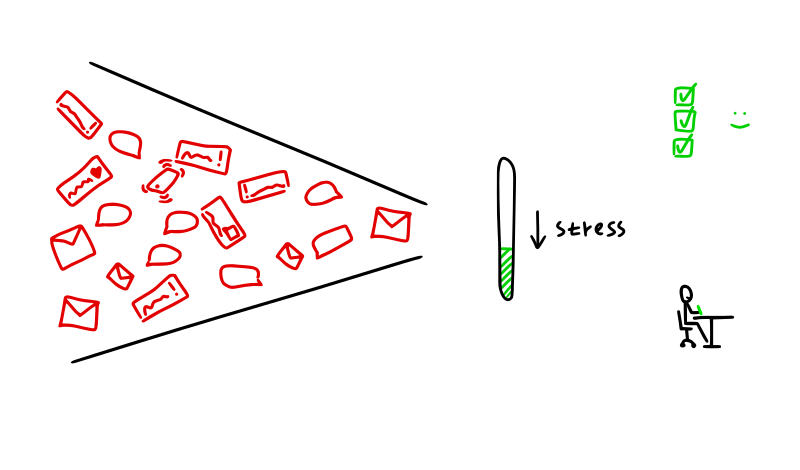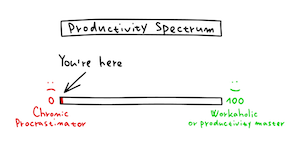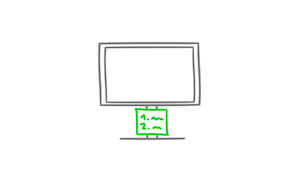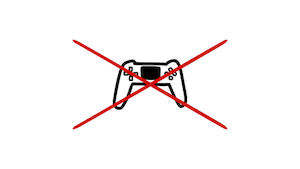How to boost your attention span: 6 tips and tricks
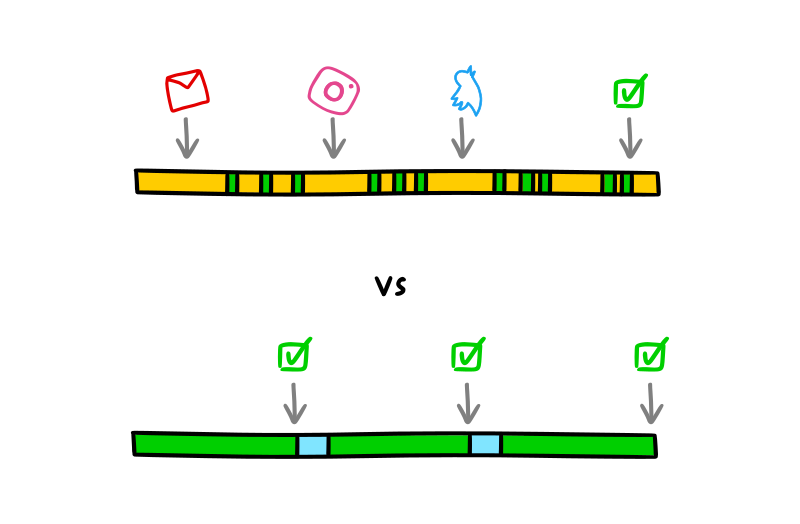
How to focus more intensely and for longer?
We've put all the essential strategies for lengthening your attention span here.
But there are some extra tips, tricks, or "hacks" that can boost your attention span. Add 5 minutes here, 10 minutes there. And even these small adjustments add up over time.
So here are some extra attention span tricks for you.
Note: they may or may not be new to you, but what matters is whether you actually use them or not. As you read the tips, pick at least 1 that sounds relevant and apply it. Alright, let's get started.
Attention span booster #1: timers
It's so easy to think about work as this amorphous, infinite thing. Nowadays, a lot of work takes time: weeks, months, even years. The amount of work to be done can be overwhelming and lead to procrastination.
That's when timers come in handy. They aren't a cure-all for productivity, but timers do help by making large amounts of work finite and approachable.
A timer helps you go from "Work on a thesis" (ambiguous, overwhelming) to "Do 30 minutes research" or "30 minutes of writing".
30 minutes is manageable. Finite. Approachable. You can find 30 minutes, most days.
Visible timers also act as a reminder of what you wanted to do.
Say you're working on something, and you start feeling a bit bored, stressed, or unfocused. You are on the verge of getting side-tracked. Then you glance at a timer that you started earlier. You see you have 7 more minutes to go. So you persist, get the work done, and can be proud of pushing yourself a bit.
So if you have a big project to tackle, using timers can be a good way to break it down. Timers also help you exclude other things. When you start a timer, you make the decision to not indulge in easy distractions for the next X minutes.
One thing to note is that different kinds of work require different amounts of time to make progress. In general, shorter timers like Pomodoro (25 min work, 5 min break, repeat) are better for repetitive work, while longer timers (45-90 min) are better for more complex, creative endeavors that take time to get into (writing, coding, designing,...)
Timers also help you to measure how much work you did. I did 6 Pomodoro intervals today, great! Tomorrow I'll do 8.
If you know you focus better under time pressure, add a bit of timer pressure.
Attention span booster #2: short to-do list in front of you
In part 1, we talked about the practice of redirecting your attention when it wanders. The better you are at redirecting it back to your task at hand, the more time you'll put in and the more progress you'll make.
To support that habit of redirecting attention, have a short list of 1-4 important tasks in front of you while you work. It's a way to remind yourself of the important tasks you meant to do, and not get carried away by the distractions and interruptions.
Say you write a list like the one below on a paper card and put it on your desk next to your computer.
- Send email to John
- Work on the proposal - 4 x 30 min
- Design email campaign - 1h
You start working on one of those tasks, but after 30 minutes or so, you get a bit bored and you start replying to messages or looking for that jacket you wanted to buy. Then you glance at your list and realize you're getting off track. You bookmark the jacket page for later and go back to the task.
The physical list of 1-4 tasks is a visual prompt that nudges you towards work that matters.
Attention booster #3: calendar schedule
We include this with a massive grain of salt.
For many people (especially those in creative professions), the idea of scheduling every single activity is daunting, unrealistic, or even alien. The calendar feels like a straightjacket to some.
So if you fall into that category, try doing the 1-4 list above instead. That's a more flexible approach that allows for more spontaneity.
However, putting your work on a calendar has its benefits, even if you're not 100% exact about following through with it.
The main benefit of a schedule is that it helps you clarify what to do when. You know what the exact sequence of tasks is.
When you have 5 projects to work on, trying to decide which to tackle on a moment to moment basis often results in paralysis. You don't know which one to pick, so you pick procrastination instead. That's not great.
But if you put the key activities on your calendar, you'll see that now you're focusing on project #1, then you have 30 min for #2, and in the afternoon #3. Tomorrow, you'll start with #5 and then #4 in the afternoon. You know what to do, you know when to do it, you know you can do it all, one by one.
You can use your favorite calendar to do this, or you print out a schedule template like the Daily Manifest from Visualize Value. Once again, the advantage of having that physical template in front of you is that it doesn't disappear from sight as easily as a digital calendar.
Attention span booster #4: move
Studies show that exercise improves cognitive control (among other things).
One particular study showed that a 20 minute walk in nature boosts concentration by about 20%, regardless of the weather.
“From an evolutionary perspective, our brains developed while working out, walking as many as 12 miles a day.”
—John Medina, Brain Rules
You don't have to walk 12 miles each day, but it's a good idea to add some movement to your day. Take a walk. Run. Bike. Climb... It's up to you, and the options that you have available.
While this sounds obvious, a lot of people don't move much during the day. If you're working from home, it's super easy to just sit all day.
For a lot of office workers, it requires a bit of conscious effort to start moving more.
If you currently do no exercise, start with walks. Preferably, don't listen to anything. A quiet walk helps us process our own thoughts, whereas if we listen to audiobooks or podcasts, we're further over-stimulating our brain and cramming more information in our heads that might not be relevant to our goals at all. But that's another topic.
All of the activities mentioned also have the added benefit of training single-tasking. You probably won't scroll Instagram on a run, going down a trail on a mountain bike at 20mph, or in the middle of climbing a rock face.
Attention span booster #5: no time to scroll
So far all of the tips were about doing more attentioning lengthening activities, but we can also approach the topic from the opposite direction: doing fewer attention shortening activities.
Some activities tend to make the focusing problem worse. For example, scrolling social media (Twitter, Instagram, TikTok,...), or watching random YouTube videos while also messaging someone (multi-tasking). These activities reinforce the wrong circuits in our brain.
Crucially, we often do these things when we "have nothing to do." Say you're at home, you've done your work for the day, you have no plans. What to do? Well, why not open TikTok, or Instagram? Let's see if there's anything interesting...
That's the moment of weakness that these apps latch onto, and that's how we reinforce the wrong behavior patterns.
So, one indirect way to stop doing these attention shortening activities is to fill your calendar with other stuff. If you go to an art exhibition, a long bike ride, or meet up with an old friend, you won't have time to scroll.
In this case, doing more real-life time-intensive activities will naturally lead to less distracted behavior.
As a bonus, it'll also introduce a constraint for work. A lot of us can now work 24/7 if we really wanted to, but that's healthy. When we think we should be productive every minute of the day, it makes us tense and unable to enjoy any sort of leisure.
However, when you fill up your calendar with fun events or interesting chats, you add constraints, which helps you be either on or off, and not in this in-between state of should-I-work-or-should-I-relax.
"Oh, I need to get this done before meeting Jon for coffee at 5."
Attention span booster #6: consume long-form content
Imagine you've done your work for the day. You feel a bit tired or exhausted, and you want to just watch, listen to or read something. Well, what that something is matters.
Platforms like Instagram, TikTok, or YouTube are good luring us with funny videos, but a quick check often turns into multi-hour marathons of just scrolling and watching aimlessly. Then later, we regret how we spent our time, and we often go to bed later than we would have liked, which has further negative consequences.
Instead, try to channel your urge to consume some interesting entertainment into less addictive media—read books, watch movies, or listen to long-form podcasts instead of consuming short, clip-based media that over-stimulates your mind.
Summary
- Use timers to make work finite
- Have a short to-do list in front of you to better redirect your attention
- Use your calendar to see what to focus on when
- Crowd out attention-shortening activities with real-world activities
- Move: walk, cycle, climb...
- Consume long-form content
So these are some bonus tips and tricks to lengthen (or at least not shorten) your attention span. Pick at least one and apply it today.
